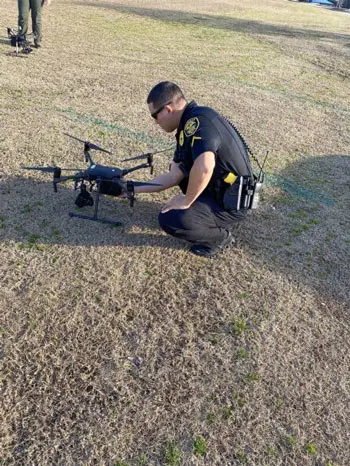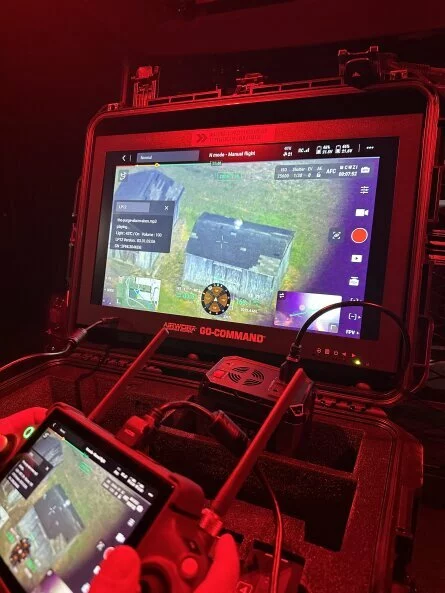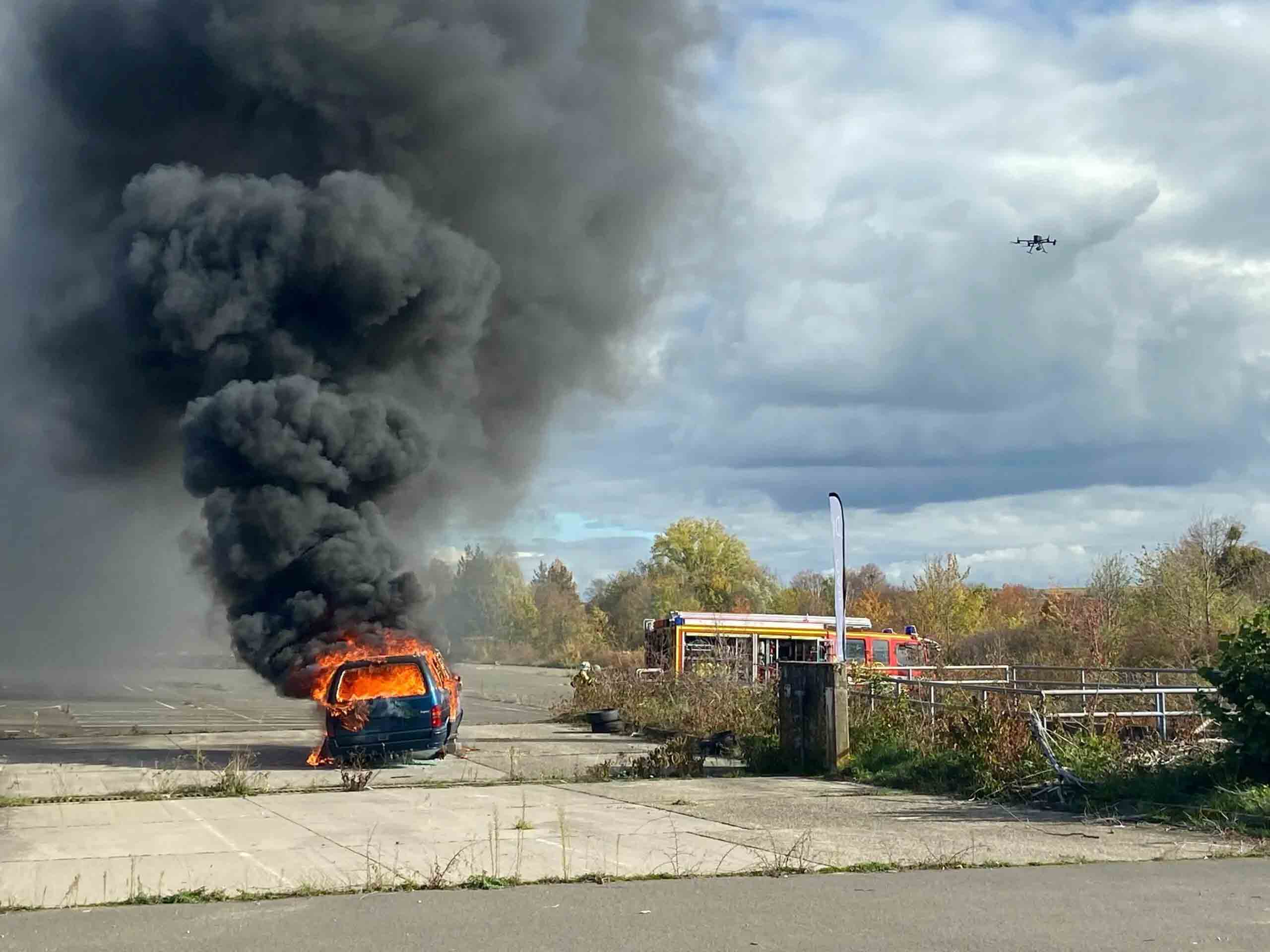Public Safety Drone: What are the Main Applications / Uses?
It enhances situational awareness and decision-making for police, firefighters, and other first responders, improving incident management and operational efficiency. When tethered to a ground power station, it can fly static for hours, giving a continuous aerial view of their environment to public safety actors.
Public Safety Drone: Definition
Un public safety drone is a protection des sites drone used by emergency services, such as police or firefighters, for missions including drone surveillance, search and rescue, or event security. Equipped with advanced technologies such as high-resolution cameras, thermal imaging, and real-time data transmission, these drones enhance the capability of emergency responders to assess and react to situations from a safe distance.
Drones de sécurité publique pour la surveillance des événements
One of the key benefits of public safety drones in shows and events security is their ability to provide a full and detailed aerial view of the event site. By deploying these drones equipped with high-resolution cameras, security teams can overwatch several points of interest simultaneously, such as entrances, safety exits, or parking lots from above. Unmatched aerial perspectives provided by drones are essential for detecting anomalies and effectively managing crowds. This aerial advantage ensures quick responses to any disturbances and aids in the smooth execution of event safety protocols.
Monitoring Traffic with Public Safety Drone
Drones are changing the field of traffic monitoring providing new perspectives and enhanced capabilities in public surveillance. These drones provide a high vantage point, enabling authorities to oversee and manage traffic flows efficiently. This aerial surveillance capability allows for real-time traffic assessments, helping to prevent congestion and swiftly address incidents on roads. In addition, drone technology combined with real-time analysis software has resulted in the ability to track, analyze, and predict traffic patterns with an accuracy and efficiency that were previously unattainable
Law Enforcement Drone Applications
Drones for les forces de l'ordre are revolutionizing public safety by improving situational awareness, telecommunications, and perimeter surveillance.
These advanced aerial devices allow police and security agencies with a versatile tool to monitor large areas efficiently and so ensuring a rapid response and real-time information flow and data. Using drones for law enforcement aids in maintaining visual contact events and teams over large perimeters, facilitating communication during critical operations.
By deploying these drones, law enforcement professionals can achieve a higher level of situational awareness, making these devices essential for modern and efficient public safety strategies
The Benefits of Drones for Police (Techniques /Advantages)
Drones for police also known as police surveillance drones, provide crucial ISR (Intelligence, surveillance, reconnaissance) capabilities offering enhanced situational awareness and operational readiness to officers.
Rapid and easy to deploy, police drones give operators a comprehensive view of their environment, complementing street cameras that have limited fields of vision. They benefit from a global perspective and the ability to follow targets with reduced risk of obstructions.
In addition, sophisticated features such as thermal imaging enable effective monitoring even in low-light conditions. For example, object identification and tracking, give operators far greater knowledge and control of their environment, enabling them to make informed decisions more rapidly.
On the other hand, Police drones can be equipped with specific telecommunications payloads to meet multiple operations requirements such as network extension, or interception of suspicious communications in the frame of anti-terrorist operations for example.
Drone as First Responder
With their ability to access otherwise unreachable views from high altitudes, these drones enhance safety by providing situational awareness without exposing teams directly to danger. Additionally, they can facilitate the establishment of pop-up telecommunications networks in devastated areas, crucial for both first responders and victims.
The night vision technology enables these drones to deliver critical visual data during nighttime operations, significantly improving the capability to assess and address urgent humanitarian situations effectively and efficiently. Drones as first responders, equipped with night vision capabilities, are revolutionizing operations in areas with urgent humanitarian needs.
These drones enable rapid deployment, offering a continuous, reliable presence in the sky, crucial for 24/7 monitoring and emergency responses. The tether provides not only a stable power supply but also secure data transmission, ideal for extended missions in disaster-stricken or hard-to-reach areas.
Public Safety Drone for Search and Rescue
Public safety drones for opérations de recherche et de sauvetage, operations provide unique capabilities to responders in finding individuals in distress and taking proactive measures. Drone search capabilities enable quicker location of individuals in challenging environments, enhancing the efficiency and success rates of rescue operations. Equipped with powerful cameras that offer the ability to zoom and see beyond the naked eye, both day and night, these drones enhance visual assessment. Furthermore, features like motion recognition and heat source detection further improve the capability to locate and aid individuals effectively. This integration of advanced technology is crucial for improving outcomes in critical situations.
Firefighting drone: Aerial Support in Fire Management
In the fight against wildfires, drones equipped with thermal imaging can penetrate smoke and monitor the spread of fires, guiding firefighters to critical hotspots and aiding in the evacuation of endangered areas. These aerial support units provide critical data in real-time, allowing firefighting teams to assess the scene from above and make informed decisions quickly. This heightened level of situational awareness ensures that both the firefighters and the public remain safer during emergency responses.
Public Safety Drone FAQ
What are public safety drones used for?
Public safety drones are used for real-time surveillance, search and rescue, disaster response, and event security. They provide enhanced situational awareness and decision-making for police, firefighters, and other first responders, improving overall incident management and operational efficiency.
What drones do police use?
Police use various types of drones, including tethered drones, quadcopters, and fixed-wing drones. Tethered drones offer extended flight times and continuous aerial surveillance, while quadcopters provide maneuverability in tight spaces. Fixed-wing drones cover larger areas and are ideal for wide-area monitoring, enabling effective and rapid response in diverse operational scenarios.
What technologies are integrated into public safety drones?
Public safety drones are integrated with high-resolution cameras, thermal imaging sensors, LiDAR, and real-time data transmission capabilities. These technologies allow responders to assess situations from a safe distance, enhancing their ability to react quickly and effectively during emergencies.
How are tethered drones used by public safety officers?
Tethered drones are used by public safety officers for long-term surveillance and continuous monitoring of specific areas. They are connected to ground power stations, allowing for extended flight durations and stable data transmission, which is essential for ongoing emergency operations.




